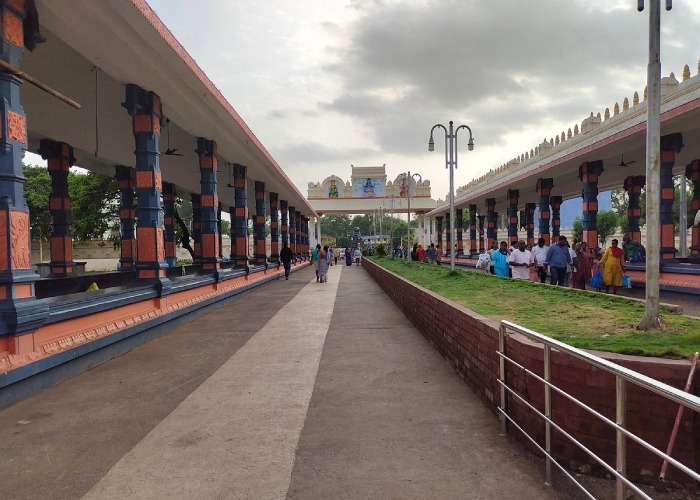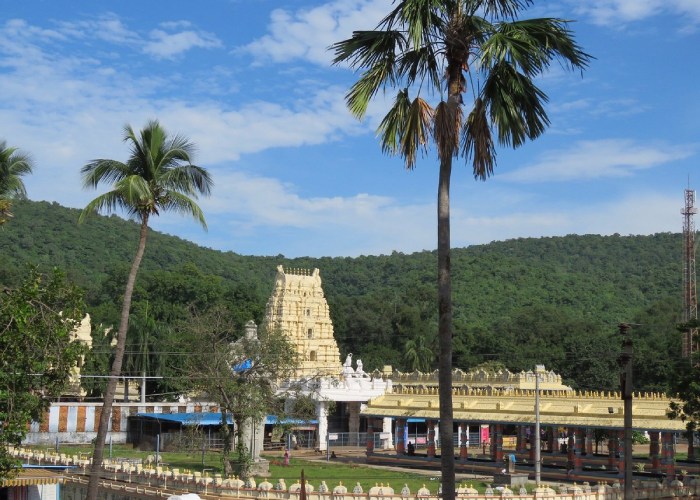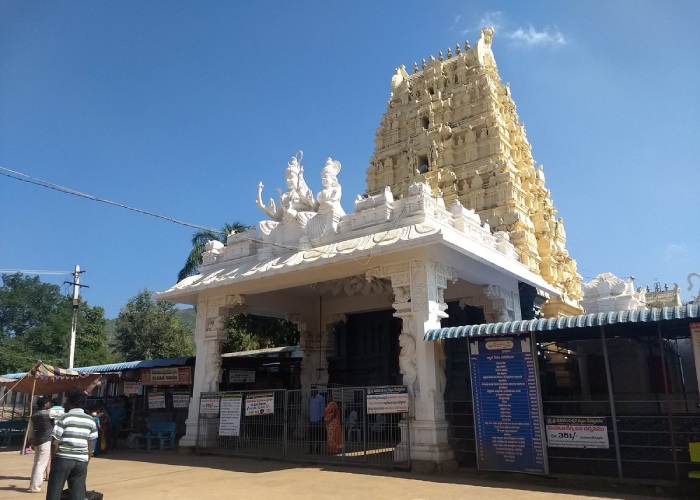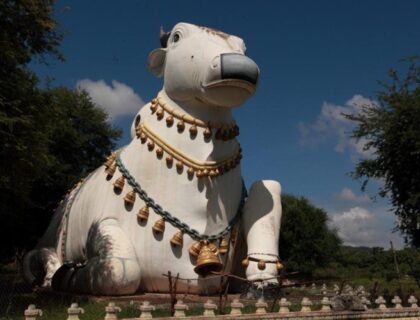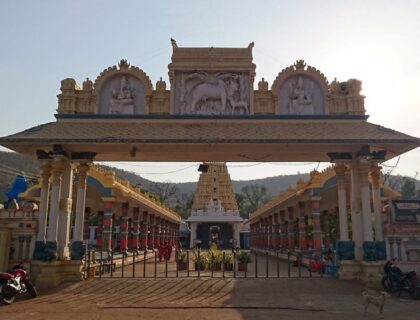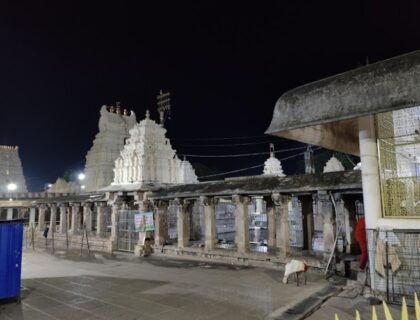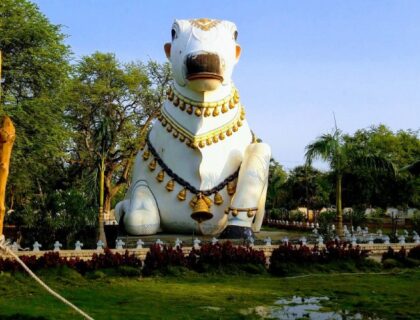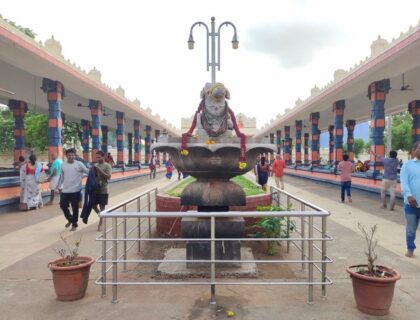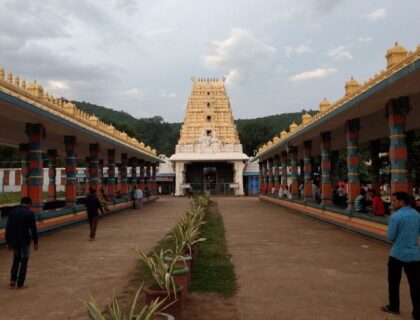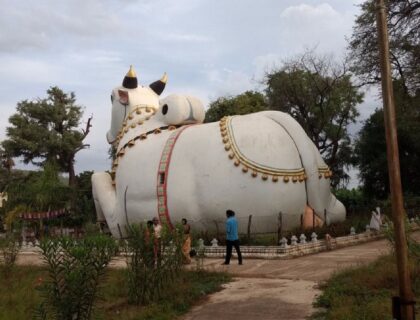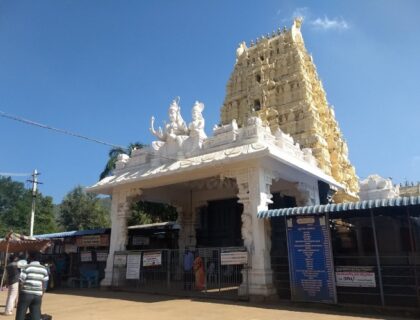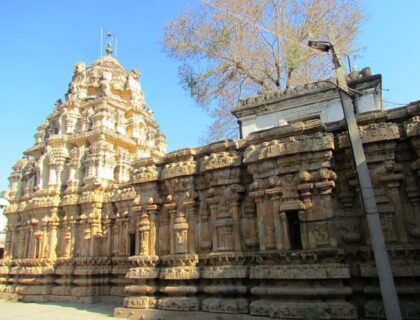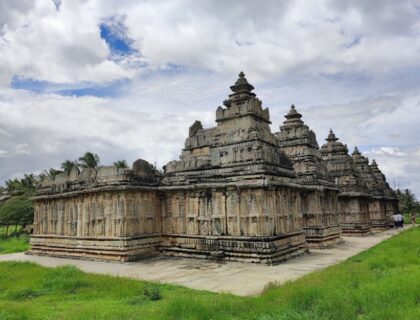Mahanandi Temple Kurnool
The Mahanandi Temple or Maha Nandiswaraswamy Temple is a Lord Shiva temple that is 1500 years old and located in Mahanandi, Kurnool district, Andhra Pradesh. This temple is one of the stops on the Nava Nandi Darshan Yatra. This temple contains a large statue of Nandi, the divine bull and Lord Shiva’s vehicle.
Mahanandi Temple has many distinguishing features, one of which is the perennial holy water gushing beneath the Lingam. The inscriptions discovered in the temple show that the shrine was repaired and renovated during the Chola, Chalukya, and Vijayanagara periods.
Story related to Mahanandi Temple
It is believed that Nandi meditated here when he was a child. Lord Shiva was moved by Nandi’s devotion and bestowed the great honour of staying with him in Kailash on him. Another intriguing story is that the divine cow’s milk used in the hydrating ceremonies was revered and celebrated by the King of that land. The divine cow was fervently worshipped. It used to graze frequently in the meadows and forests. The King noticed that the amount of milk was diminishing day by day.

He pursued the cow in search of the true reason and discovered that the cow was automatically releasing milk on an anthill. The King was surprised and ordered his men to dig the anthill. When the King tried to chase the cow, the cow was stunned and left footprints on the Linga. The King realized his error and rebuilt a temple in its place. The divine cow’s prints can still be seen today.
History of Mahanandi Temple
According to the Mahanandi Temple’s ‘Sthalapurana’ history, the 7th-century temple is dedicated to Lord Shiva. Inscriptions on tablets dating from the 10th century show that this temple has been restored and rebuilt several times. Mahanandiswara Temple is one of India’s oldest, dating back over 1,500 years.
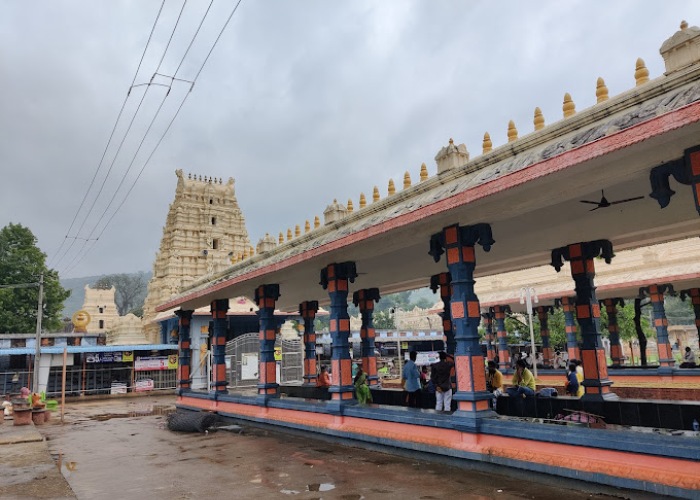
Various improvements were made to the temple, which was originally built by the Chalukyas in the seventh century, between the tenth and fifteenth centuries. According to temple legend, the Nandas ruled the region in the tenth century A.D., built numerous temples, and worshipped Nandi, their ancestral deity.
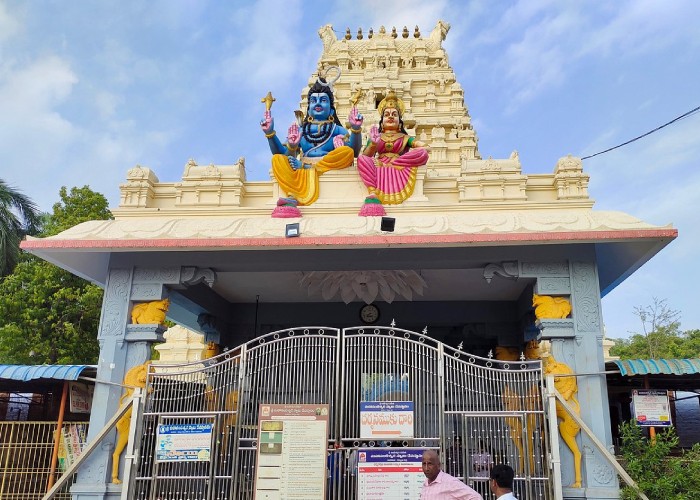
The Mahanandi Temple, dedicated to Lord Shiva in the seventh century, is a well-known and sacred site. Though the original structure was built by the Chalukyas in the seventh century, several additions were made in the tenth and fifteenth centuries. The gopuram over the central sanctum is built in the Badami Chalukyan style of architecture, while the rest of the temple is built in the Vijayanagara style. According to legend, the local kings known as Nandas ruled here in the 10th century AD, and they built several temples and worshipped their ancestral deity, the Nandi, thus the name Mahanandi.
The Architecture of Mahanandi Temple
The temple is well-known for its freshwater pools, known as Kalyani or Pushkarni. The temple’s architecture reflects the Chalukya Kings’ strong presence in this region. The pools in the temple demonstrate the Vishwakarmas’ skill.

Three pools surround the main temple: two small pools at the entrance and one large pool inside the temple itself. This holy tank is 60 square feet (5.6 m2) in size and has an outdoor pavilion in the centre called a mandapa. The tank’s inlets and outlets are configured so that the water depth is always kept at five feet, allowing pilgrims to bathe in the holy waters. Every day after 5 p.m., bathing in the inside big pool is prohibited.

The water source is unique in that it has a constant flow regardless of the season. The water comes from the Garbhagruha (inner shrine) just beneath Swayambhu Linga. The water near the Shiva Linga (symbol of Shiva) can be touched. Devotees can pray to and touch the Shiva Linga. This is unusual because the main deity is usually kept away from the touch of the devotees in temples.

The water is known for its crystalline and healing properties, and it is always tepid. The emitted water irrigates 2,000 acres (8.1 km2) of fertile land around the village. Rice fields, and fruit, vegetable, and flower gardens can be found in the surrounding areas. The temple is famous for its konneru. During the winter, the water will be boiling, and vice versa during the summer. The water is lukewarm in the early mornings and gradually cools as the temperature rises.
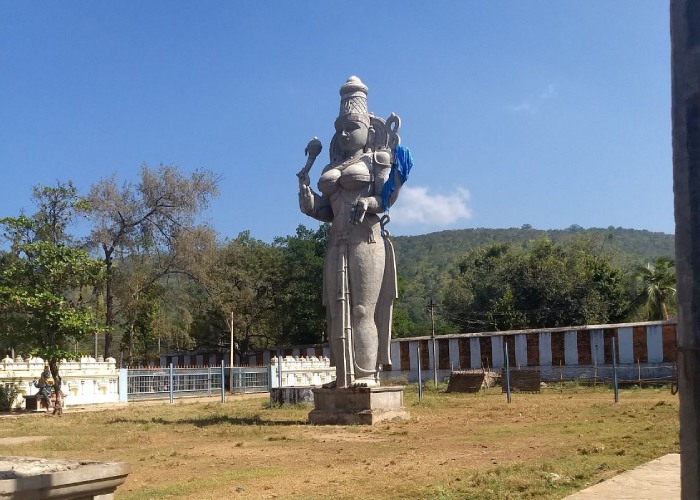
A shrine dedicated to Kameshwari Devi, Mahanadheeshwara’s consort, is located near the sanctum. Adi Shankaracharya is said to have erected the Srichkara in front of the god, and the popular belief is that when one contemplates the Lord, he or she will receive a vision that corresponds to the individual’s status in front of the mother.

Mahanandi Temple has nearly three pools. Outside the temple, there are two pools. The third pool within the temple grounds has an uninterrupted water flow that originates from the basement of Garbha Gruha, which houses the main deity (Shiva Ling). This 60-square-foot tank has a Mandapam in the centre, and the tank’s inlet and outlets are designed so that the water level always remains at five feet high. As a result, devotees can take a dip in this holy tank. Devotees are permitted to pray to Shiva Ling and to touch the water beneath the Lingam in the main Sanctum Sanctorum. Outside the Mahanandiswara Temple, there is a massive Nandi statue.
Important Facts About Mahanandi Temple
- Mahanandi is a picturesque village surrounded by thick forest to the east of Nallamala Hills. There are nine Nandis (Bulls) known as Nava Nandis within a 15-kilometer radius of Mahanandi.
- Mahanandi is well-known for the Mahanandiswara Temple and the Nava Nandi shrines. Mahanandi, Shivanandi, Vinayakanandi, Somanandi, Prathamanandi, Garudanandi, Suryanandi, Krishnanandi, and Naganandi are the nine Nandi temples.
- Maha Nandiswaraswamy Temple is dedicated to Lord Shiva, which is believed to be more than 1500 years old.
- The beautiful Mahanandishwara temple stands as a testament to the time and exhibits both Chalukya and Vijayanagara architecture. There are gopurams or towers with multiple levels.
- One at the entrance, which is completely decorated with enormous sculptures and carvings, leaves spectators awestruck and in awe of the minute and magnificent carvings.
- The temple contains a Nandi, which is tall and magnificent and draws the attention of everyone who visits it. The temple tank, known as Kalyani, is considered highly sacred and has a plentiful supply of freshwater.
- Lord Shiva’s idol is Swayambhu or self-manifested. The water source, which comes from the Garbhagriha beneath the Linga, is another temple miracle.
- The Maha Nandiswaraswamy Temple is thought to be the residence of the living God. He lavishly blesses all of his devotees.
- Worshipping Lord Shiva at this temple is thought to bring great wisdom and knowledge. People also pray for a good job and higher grades in school.
- People looking for life partners also frequent this temple. Lord Shiva will guard his devotees like an amulet and assist them in reaching new heights of success.
Best Time to Visit Mahanandi Temple
This place is very heavenly and spiritual, and you can visit it all year. The best time to visit this temple, however, is during the monsoon and winter seasons. During the monsoon season, this location receives moderate to heavy rainfall, making it appear heavenly with its greenery and bringing freshness elsewhere.
Famous Festivals In Mahanandi Temple
- Shravana: For happiness and wealth, many fasts, offerings, and mantras are performed during the fifth month of the Hindu calendar, known as Shravana.
- Mahashivaratri is a fasting ritual that takes place in the last week of February. It is reminiscent of Lord Shiva bringing Goddess Parvati with him. A Grand Celebration is arranged by priests and the temple committee.
- Vijayadashami – It is observed on the tenth day of the month of Ashvin, the seventh in the Hindu Luni-Solar Calendar.
- Ugadi– Ugadi or Yugadi, also known as Samvatsardi (meaning “beginning of the year”), is the Hindu calendar’s New Year’s Day and is celebrated in the Indian states of Andhra Pradesh, Telangana, Karnataka, and Goa.
How to Reach Mahanandi Temple
By Air: The nearest airport to the temple is in Hyderabad, which is about 215 kilometres away from Kurnool. Some buses run from Hyderabad to Nandyal.
By Rail: The nearest railway station is Nandyal, which is 19 kilometres away from Ahobilam.
By Road: APSRTC provides bus services from major cities such as Tirupati, Hyderabad, Kurnool, and Vijayawada. Private and public buses also serve parts of Bengaluru, Bellary, and Chennai.
Also Read – Mallikarjuna Jyotirling
Support Us
If our content helps you even 1% in gaining information about the temple, please support us by contributing any amount, our UPI ID is - q417999792@ybl Or pay using QR CODE >>> Click Now
Location
Facilities
- Drinking Water
- Pooja Item Shops
- Prasad Shops
- Restaurants Nearby
- Resting Room













